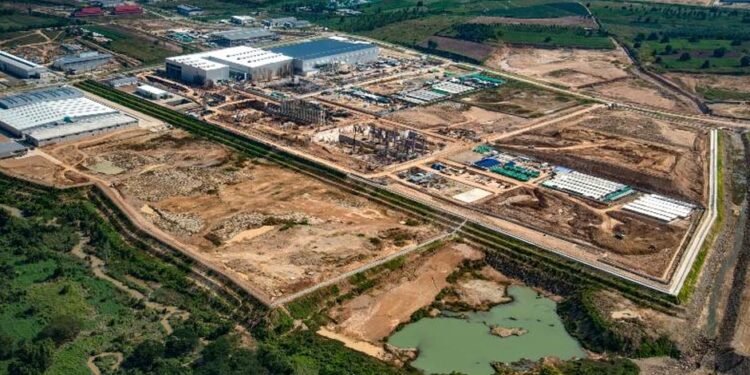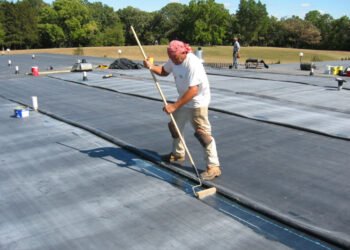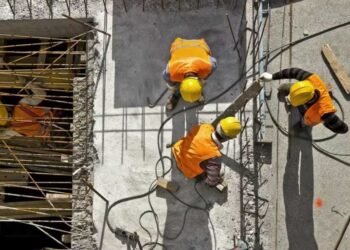Industrial property development is experiencing significant growth and transformation in today’s rapidly evolving economic landscape. The sector has seen a surge in demand, driven by e-commerce expansion, reshoring efforts, and the need for more resilient supply chains. This shift has led to increased investment in warehouses, distribution centers, and manufacturing facilities across various regions. As we delve into the current state of comprehensive industrial property development services, we’ll explore key trends, challenges, and opportunities shaping this dynamic market.
Market Growth and Demand
The industrial property sector has witnessed remarkable growth in recent years. According to recent data, the global industrial real estate market size was valued at $1.2 trillion in 2023 and is projected to reach $2.5 trillion by 2030, growing at a CAGR of 11.5% during the forecast period. This substantial growth is primarily attributed to the rising demand for logistics and distribution facilities, fueled by the e-commerce boom and the need for more efficient supply chain networks.
Location Strategies
Developers are increasingly focusing on strategic locations for industrial properties. While proximity to major transportation hubs and urban centers remains crucial, there’s a growing trend towards developing in secondary and tertiary markets. These areas offer lower land costs and often provide tax incentives, making them attractive for large-scale industrial developments. Additionally, the concept of “last-mile” facilities in urban areas is gaining traction, catering to the demand for rapid delivery services in densely populated regions.
Sustainability and Green Building Practices
Environmental considerations are becoming paramount in industrial property development. Developers are incorporating sustainable design elements, energy-efficient systems, and green building materials to reduce the environmental impact of these large-scale properties. Many new industrial facilities are pursuing LEED certification or other green building standards, not only to meet regulatory requirements but also to appeal to environmentally conscious tenants and investors.
Technology Integration
The integration of advanced technologies is revolutionizing industrial property development. Smart building systems, IoT sensors, and automated material handling equipment are becoming standard features in modern industrial facilities. These technologies enhance operational efficiency, reduce energy consumption, and improve overall building performance. Furthermore, the rise of Industry 4.0 is driving the development of “smart factories” that require specialized infrastructure and connectivity solutions.
Flexibility and Adaptability
Given the rapid pace of change in industrial processes and supply chain dynamics, developers are prioritizing flexibility in their designs. Multi-use facilities that can easily adapt to changing tenant needs are becoming more common. This includes features like modular construction, movable walls, and scalable utility systems that allow for quick reconfigurations as business requirements evolve.
Investment Landscape
The industrial property sector has become increasingly attractive to investors seeking stable, long-term returns. Institutional investors, REITs, and private equity firms are allocating significant capital to industrial real estate, driving up property values and fueling new development. This influx of capital has led to more speculative development in some markets, as investors bet on continued strong demand for industrial space.
Challenges and Constraints
Despite the sector’s growth, industrial property development faces several challenges. Land scarcity in prime locations is driving up costs and forcing developers to look further afield. Zoning restrictions and community opposition can also pose hurdles, particularly for large-scale developments. Additionally, rising construction costs and potential labor shortages in the construction industry are impacting project timelines and budgets.
Global Supply Chain Shifts
Geopolitical tensions and the lessons learned from recent supply chain disruptions are influencing industrial property development strategies. There’s a growing trend towards nearshoring and reshoring of manufacturing operations, leading to increased demand for industrial space in certain regions. This shift is prompting developers to reassess their global portfolios and invest in markets poised to benefit from these changing supply chain dynamics.
E-commerce and Last-Mile Delivery
The continued growth of e-commerce is a major driver of industrial property development. As online retail sales grow, so does the need for large distribution centers and smaller last-mile delivery hubs. Developers are responding by creating specialized facilities that cater to the unique requirements of e-commerce operators, including high ceilings, advanced sorting systems, and ample parking for delivery vehicles.
Future Outlook
The industrial property development sector is poised for continued growth and evolution. As technology advances and consumer expectations shift, we can expect to see more innovative and sustainable industrial facilities. The integration of automation, robotics, and AI will likely reshape the design and functionality of these properties. Additionally, the trend towards mixed-use industrial developments that combine logistics, manufacturing, and even office spaces may gain further traction, creating new opportunities for developers and investors alike.












